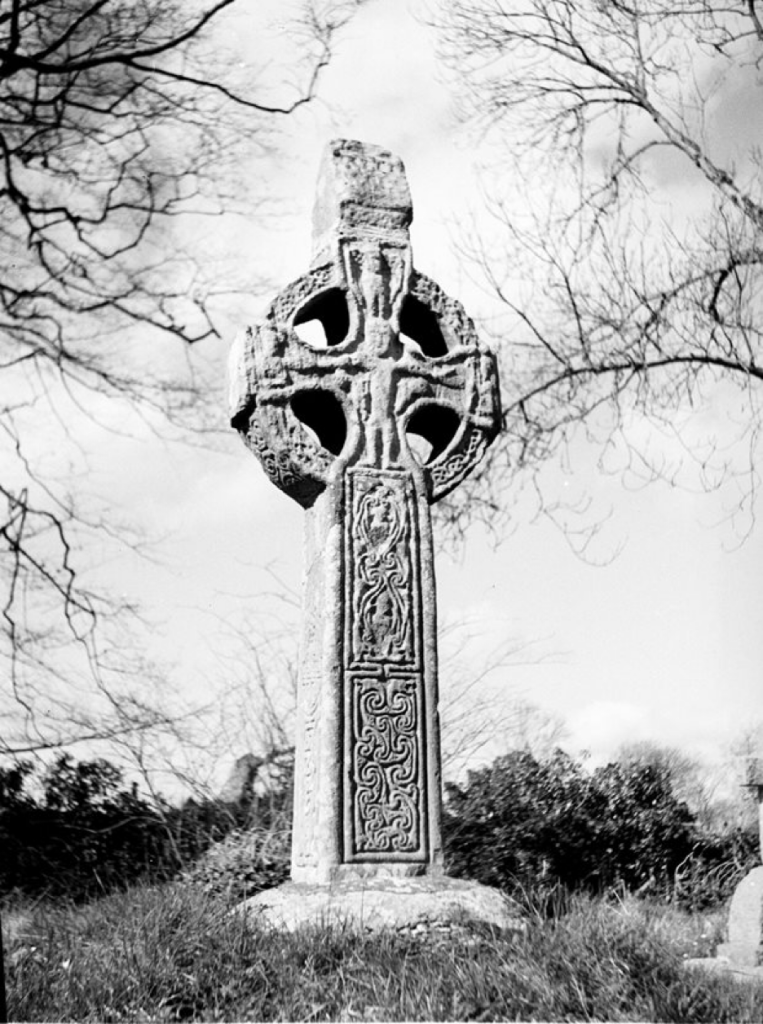The History, Meaning and Symbolism of the Irish Celtic Cross
The Celtic Cross is known throughout the world as a symbol of Irish Heritage. Find out more about the distinctive features, origin, history, uses and symbolism of these magnificent stone monuments below.
Crosses are features of the Irish Countryside
On any road trip around the beautiful Irish countryside you are likely to see a Celtic stone cross on your travels! Located in almost every one of the 32 counties, Celtic crosses are synonymous with Ireland and Irishness. These magnificent stone crosses are beautifully commemorated in jewelry and other decorative arts both ancient and modern.
Four distinctive features of a Celtic Cross
The oldest “high” stone crosses still standing in Ireland date from the 8th century to the 12th century.
The crosses themselves are often intricately carved with the earliest crosses depicting knotwork and later crosses including imagery of bible stories and inscriptions.

They are impressive and imposing features in the Irish landscape. Early crosses stand about eight feet high with some later crosses much taller. The very tallest is an imposing 23 feet high!
Despite this variation there are several distinctive features of these ancient Celtic Crosses including:
- The Base: which is not always present. Usually a pyramid shape and sometimes carved, giving height to the cross.
- The Shaft: which is usually divided on all sides into panels that house intricate designs or artwork depicting figures.
- The Cap: at the top of the upper arm of the cross but is often not present.
- The Head: which can be subdivided into the center and the arms. Most stone Celtic Crosses have a distinctive ring shape around the center of the head.
No one really knows why ancient people first started erecting such huge stone monuments! What is known is that the High Crosses or Celtic Crosses are typically located at or by important monasteries.
They may have been used to define boundaries or special parts of the monastery, with many used for preaching, teaching scripture, prayer, and penance. The more elaborately carved crosses would have also signified the wealth and authority of the monastery. Many crosses commemorate an event or a patron with several dedicated to important saints, including St. Patrick, or Irish High Kings.
Irish stone crosses are thought to have developed from slab crosses. As the name suggests slab crosses were just big blocks of stone, usually granite with crosses carved onto them. By at least the 8th century, some inventive artisan decided to knock out the pieces between the arms of the cross creating the first ‘Celtic Cross’.
Perhaps one of the oldest surviving free-standing stone cross in Ireland is at Carndonagh, Donegal, also known as the Donagh or St. Patrick’s Cross. Tradition suggests that a church or monastery was founded here in the fifth century by Saint Patrick with Irish missionaries.
Celtic “High” Crosses are freestanding stone crosses that date from the 8th to 12th century. In the oldest crosses from this period, the arms of the cross often don’t extend outside the ring with carvings usually depicting ancient celtic symbols and geometric designs. Later crosses from this period are often larger and decorated with biblical scenes.


After the 12th century these crosses evolved to become boundary or territorial markers and are often referred to solely as Celtic Crosses, rather than “High Crosses”, even though many are still quite tall!
Celtic Crosses became very fashionable in the 18th Century during the “Celtic Revival” with intricately carved crosses and a return to geometric symbols used to mark graves and memorials – any Irish person worth their salt literally wouldn’t be seen dead without a Celtic Cross!
Since that time the Celtic Cross as a symbol has reached beyond monastic sites and graveyards into modern day logos, decorating t-shirts, tattoos, and of course jewellery and is recognised worldwide as an icon of Ireland.
